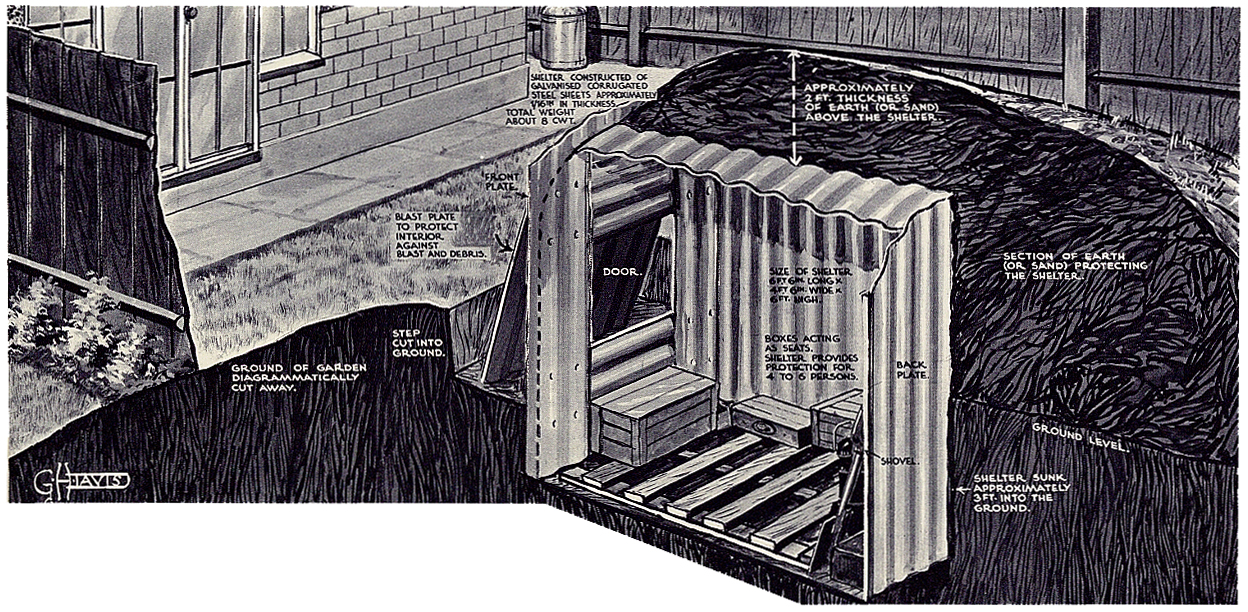
Diagram of how to construct an Anderson Shelter, Catalogue ref: ZPER 34/196
Experts said that bombing would kill hundreds of thousands of people. So new plans were made for mass evacuation, the construction of large public shelters, and the erection of small units in private gardens (“Anderson” shelters) and inside houses (“Morrison” shelters). Although the War began in September 1939, bombing of Britain did not start immediately. People developed a false sense of security and were not keen to have shelters. Once heavy bombing began, from the summer of 1940 onwards, shelters became more popular.
- Can you explain how the Morrison shelter worked?
- Compare this to the Anderson shelter ‘Diagram of how to construct an Anderson Shelter’, Catalogue ref: ZPER 34/196).
- According to Jenny Fleming in her letter addressed to Herbert Morrison what were the problems of public shelters, 1940? Catalogue ref: HO 207/783
- Do you think Herbert Morrison would have responded to this letter?
- Could the government have done anything to improve public shelters?
Transcript of captions
Shelter constructed of galvanised corrugated steel sheets approximately 1/16 th in thickness. Total weight about 8 cwt.
Front Plate.
Blast Plate to protect interior against blast and debris.
Step cut into ground.
Ground of garden diagrammatically cut away.
Door.
Approximately 2 ft. thickness of earth (or sand) above the shelter.
Size of shelter 6ft 6in long x 4ft 6in wide x 6ft high.
Boxes acting as seats. Shelter provides protection for 4 to 6 persons.
Back Plate.
Shovel.
Section of earth (or sand) protecting the shelter.
Ground level.
Shelter sunk approximately 3 ft into the ground.
